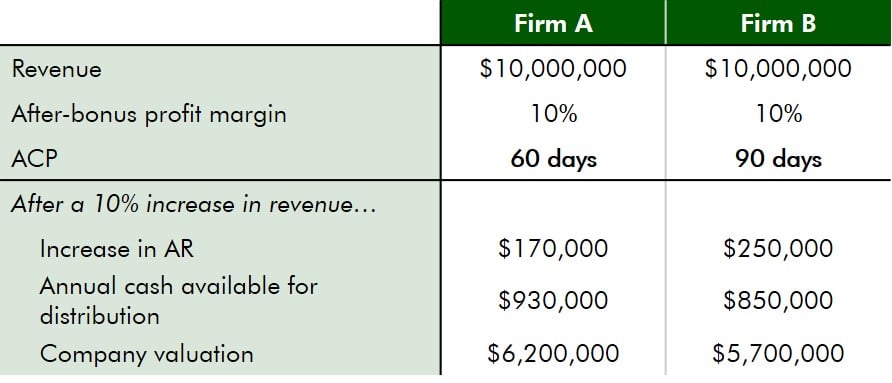AE valuation & ownerhship transition advisor > Volume 5 Issue 1
AE Valuation & Ownership Transition Advisor: Volume 5 Issue 1
A guide to help you better understand how AE firms are valued and—perhaps more importantly—what you can do to build value now.

In This Issue
valuation 101
the value proposition
valuation 101
Back to Normalcy?
After enduring a full year of the coronavirus pandemic,the A/E and environmental industry is not only alive and well—it’s thriving. The industry fared better than most during the pandemic, and the promise of federal stimulus spending, combined with the potential for tax increases next year, has supercharged industry performance and demand for deal-making while boosting firm valuations above pre-pandemic levels.
Countless tales from firm leaders of all-time highs in backlog and record profits—combined with trillions of stimulus dollars being infused into U.S. businesses—have driven an explosion of ownership transition in the new year. With 108 U.S. M&A transactions announced in the first quarter of 2021, not only was it the most active first quarter on record, but it was also the hottest three-month period ever.
What has that meant for firm valuations? With notable exceptions for certain architecture or design firms focused on retail, hospitality, and commercial spaces, industry valuations largely held through the pandemic. This was due to higher-than-expected utilization rates, driven by fewer employees taking time off, and owners and clients across most sectors continuing to push through with their capital improvement plans.
In the post-pandemic world, public-sector infrastructure spending—and optimism that far more of it will follow—is driving an uptick in valuations. As Congress considers the Biden administration’s $2 trillion infrastructure spending plan, industry valuations are experiencing upward pressure based on the presumption of strong future earnings. While firm valuations can vary widely depending on the condition and circumstances of the individual business, public infrastructure firms in high-growth states with strong economic conditions, most notably across the Sun Belt, stand to gain the most in 2021. However, research suggests that well-targeted public infrastructure investment spurs private-sector productivity and spending, so the entire industry should benefit sometime in the near- to medium-term.
Firms considering a transaction in 2021—be it for an internal or external ownership transition—should assess their valuation methods in light of the improved post-pandemic environment and positive outlook for future earnings.
the value proposition
Accounts Receivable’s Surprising Impact on Firm Value
It might seem intuitive that as your firm’s accounts receivable grow, so does the worth of your firm. After all, that money due from clients is going to come in eventually, so the larger that amount, the more your firm should be worth, right? Not so fast.
Although it varies by discipline and market sectors served, the Average Collection Period (ACP) for A/E and environmental consulting firms typically runs between 70 and 75 days. An ACP above 75 days could not only be a warning sign to potential buyers, but it could also reduce the value of your firm. Why? Because longer collection periods reduce cash flow and mean more capital is required for growth. That reduces returns to shareholders—and therefore, valuations.
The effect can be significant. Compare two firms that each have $10 million in revenue, 10% after-bonus profit margin, and 10% annual growth. While Firm A has an ACP of 60 days (worth $1.7 million), Firm B has an ACP of 90 days (worth $2.5 million).

Next year, after 10% growth, the firms will each have $11 million in revenue and $1.1 million in profit. While Firm A’s accounts receivable (AR) will increase by $170,000, Firm B’s will rise by $250,000 because of the longer ACP. Thus, Firm A will be able to return $930,000 ($1.1 million in profit minus $170,000 in AR), but firm B will only be able to return $850,000 ($1.1 million in profit minus $250,000 in AR). At a typical capitalization rate of 15%, Firm A would be worth $6.2 million while Firm B would be worth only $5.7 million, a difference of $500,000.
If Firm B were to be able to reduce its ACP from 90 to 60 days, not only would it see its valuation rise by $500,000 but it would free up an additional $800,000 in cash for a one-time, immediate distribution to shareholders. The bottom line: Improving collections can have a significant positive impact on your firm’s valuation.
exit strategy
When Should You Start Thinking about Ownership Transition?
Although an ownership transition for your A/E or environmental consulting firm may not be in your immediate plans, that doesn’t mean that you shouldn’t be taking steps now to put your firm on solid footing for a transition and maximize your future payout.
Morrissey Goodale recommends that firm leaders start thinking about the ownership transition process by around 10 years before their planned retirement or exit from firm ownership. The first steps in that process are to identify those employees with partnership potential. Have discussions with them about their futures at the firm and tell them about the partnership path you see for them if they continue to develop and perform.
Between seven and nine years before your expected departure, begin to bring those on the partner track into the ownership group by selling them small stakes in the firm. Approximately five years before a planned exit, ensure that options for the future leadership team are in place and, ideally, reduce the ownership of retiring shareholders to 70% or less. By the time you are within one to three years of your desired departure date, develop a detailed share transfer plan and get commitments from the next generation of owners.
A lack of sufficient preparation can dampen the value of your eventual payout. Whether you’re planning for an internal or external ownership transition or establishing an ESOP, in all cases you will need the next generation of leadership firmly in place. Although it will be slightly less important in the case of an external acquisition, a buyer will still want to know that the key leaders and client relationships will pass along with the firm. An external sale can be accomplished quickly in most cases, but without investing time to groom your successors, you could find yourself in a forced sale position that will decrease your firm’s valuation. With proper forethought, however, you can put in place a highly capable leadership group that will continue to grow your firm and enhance the value of your payout.
Subscribe to our Newsletters
Stay up-to-date in real-time.










